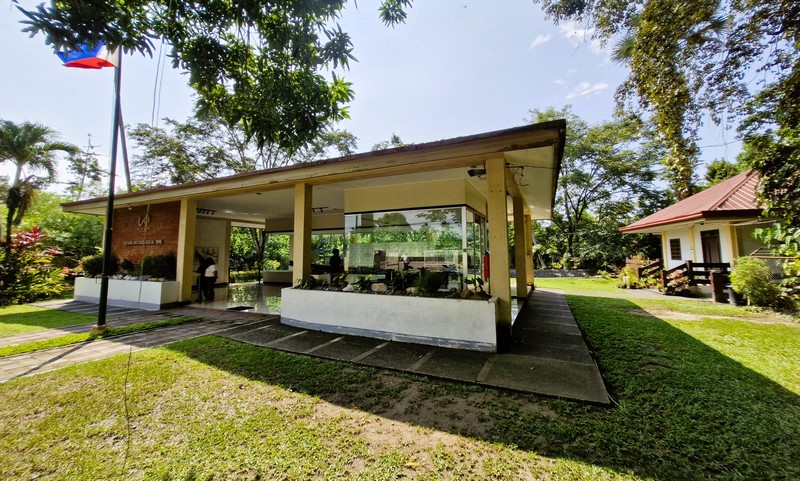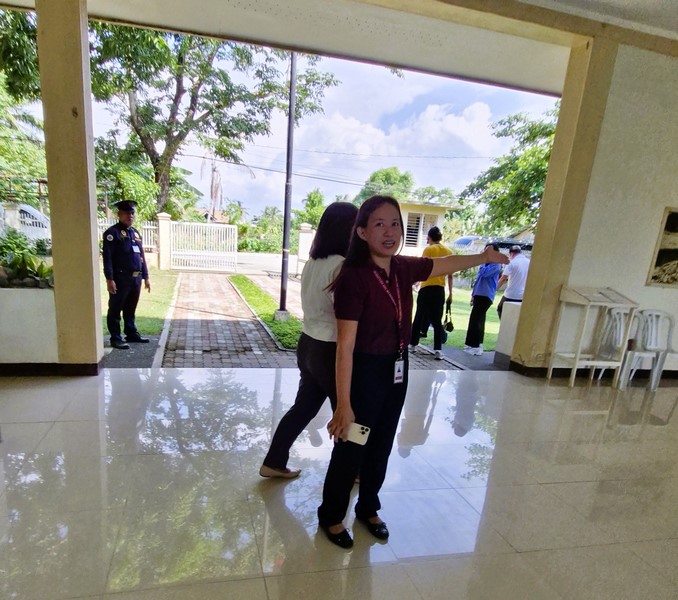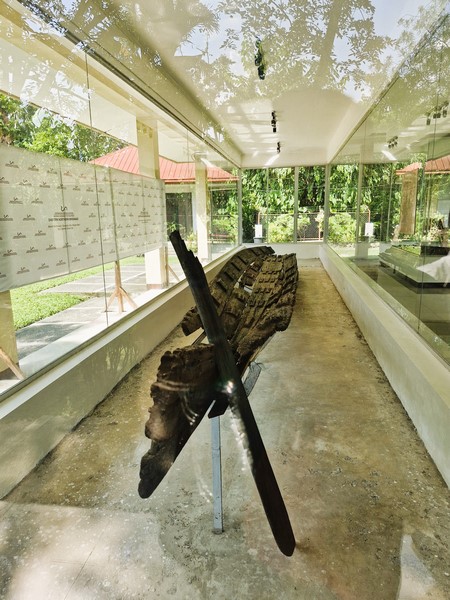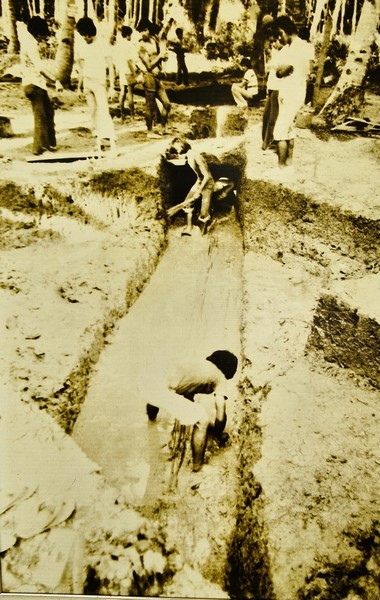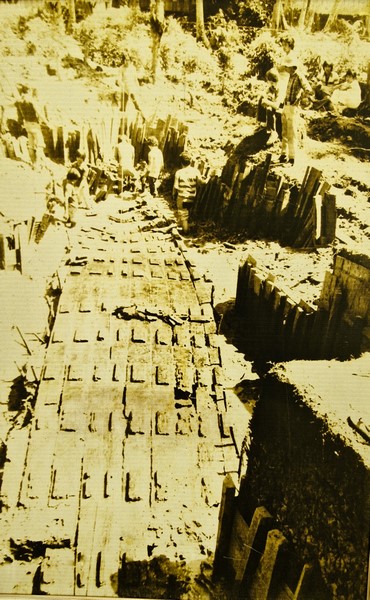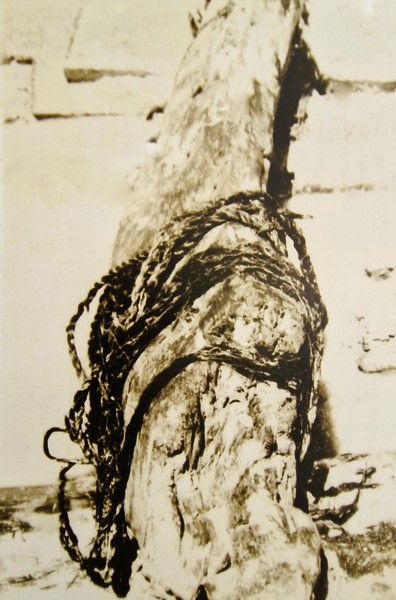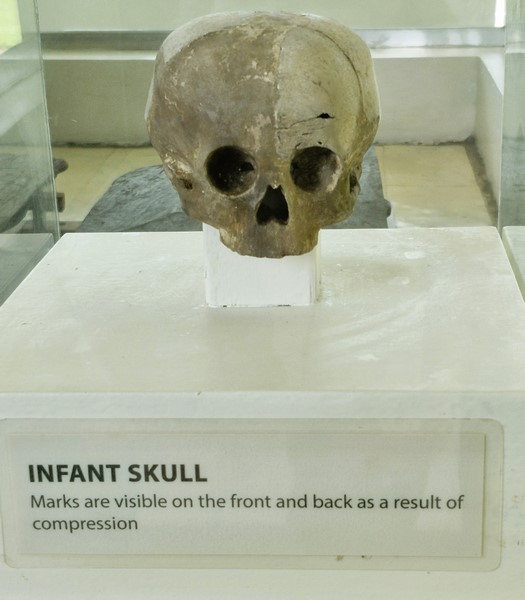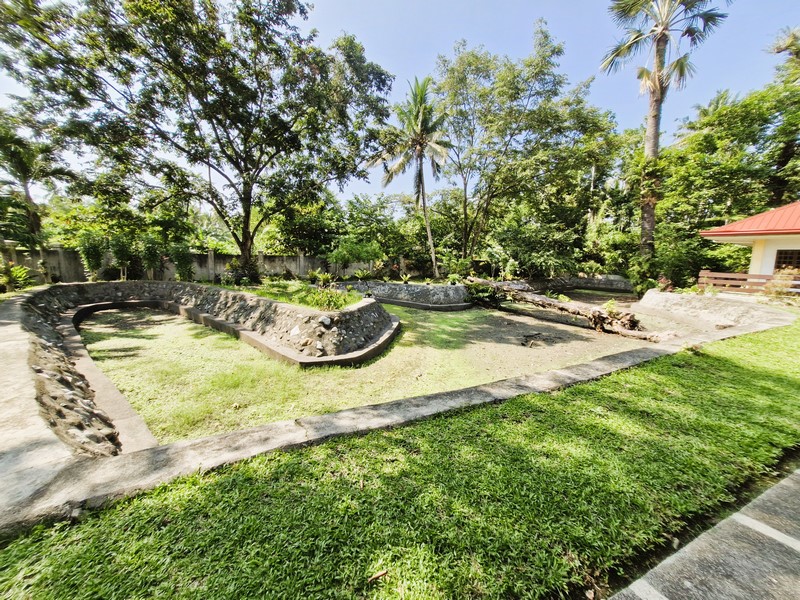Part of Almont Inland Resort-sponsored Tour
After arrival and lunch at Almont Inland Resort, Jandy and I, accompanied by Mr. Carl Ballesteros and Ms. Debra Rutz Tanginan, Sales and Marketing Manager and Media Marketing Officer, respectively, of the resort, boarded a Starex van to begin our tour of Butuan City. From the resort, it was a 4.9 km. (15-min.) drive to the Balanghai Shrine Museum.
Located between the city and the airport, this small but innovative, one-storey open-air museum, a field museum of the National Museum of the Philippines, celebrates the rich maritime heritage of the Philippines. Upon arrival, we were toured around the quaint little museum by the very able and knowledgeable Ms. Gloradel T. Tamayo.
The museum displays, in a specially made glass case, is Butuan Boat No. 1, the more than 1,700-year old balanghai (or balangay), the oldest of nine boats discovered in September 6, 1976 by pothunters in search of Chinese ceramics at Brgy. Ambangan. It originally measured around 10.2 m. (33 ft.) in length and has been dated to 777-988 CE. The timber used in its construction are identified as toog (Petersianthus quadrialatus), narig (Vatica sp.), and lawaan (Shorea sp.). Three of these water-logged timber boats have been excavated while the others are still in situ.
On March 9, 1987, the balanghais were declared a National Cultural Treasure by virtue of Presidential Proclamation No. 86, series of 1986, signed by the late Pres. Corazon C. Aquino. The establishment of the shrine was made possible by the donation of land by Felix A. Luna, a resident of the area, in 1979.
These large sea-going wooden plank-built (Heretiara litorales, locally called dongon) and edge-pegged outrigger boats are 15 m. long and 3 m. wide across the beam. Carbon-14 dating indicates it belongs to the 4th and 13th to 14th century AD. The oldest was dated to 320 AD by Tokyo’s Gakushuin Uniiversity.
Sugar palm fibers, locally called cabo negro, hibyok or hidyop (Arenga piñata), were used to tie the boat planks together. Two others were dated to 990 and 1250 AD. These predate the relics of Viking ships in European museums and they represent the oldest fleet of boats excavated in one place.
Also on display are 3 m. long wooden coffins and deformed skulls (showing clear signs of cranial deformation, a cultural practice, at that time, either to signify group affiliation, social status or for aesthetic purpose) dating to the 14th and 15th centuries. The coffins were found 16 m. east of the boat, though proximate to the boat, the coffin burials have no chronological reference to the 12th and 13th century middle layer, being situated on the high ground beyond the eastern limits of the midden.
Displayed on the walls are actual photos of the 1976 to 1986 excavation as well as the rope used to tie the boat planks together. At the back of the museum is the actual excavation site, a single trench, which is part of the Agusan River Delta System. Another excavation site, not open to visitors, is located at the back of the Toyota Showroom.
Balangay Shrine Museum: 6th St., Sitio Ambangan, Brgy. Libertad, Butuan City, 8600 Agusan del Norte. Mobile number (0919) 077-9854. E-mail: butuan@nationalmuseum.gov.ph. Opened Tuesdays to Sundays (closed on Mondays), 9 AM to 5 PM.
How to Get There: Cebu Pacific Air has 20 daily flights from Manila to Butuan City. The museum is 5 kms. east of the city. From Gaisano Mall/Butuan City Integrated Transportation Terminal, take a tricycle (locally called a trisikad) to the museum.
Almont Inland Resort: J. C. Aquino Ave. (formerly Zamora St.), Brgy. Imadejas, 8600 Butuan City. Tel: (085) 300-0296. Mobile number: +63977 674 3412. Email: fo.inlandresort@almont.com.ph. Website: www.almont.com.ph/almontinlandresort.


